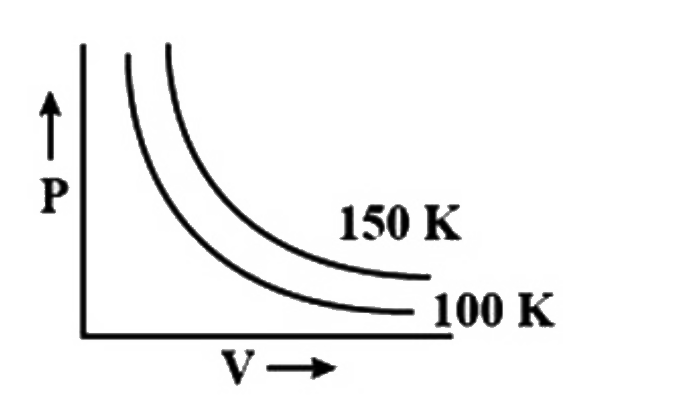When volume of system is increased two times and temperature is decreased half of its initial temperature, then pressure becomes ………….
The correct Answer is:A, D
To solve the problem, we can use the ideal gas law, which states that:
PV=nRT
Where:
- P = pressure
- V = volume
- n = number of moles of gas (constant in this case)
- R = universal gas constant
- T = temperature
1. Identify Initial Conditions:
Let the initial volume be V, the initial temperature be T, and the initial pressure be P.
2. Determine Final Conditions:
- The volume is increased to 2V (doubled).
- The temperature is decreased to T2 (half of the initial temperature).
3. Apply the Ideal Gas Law:
According to the ideal gas law for the initial state:
PV=nRT
For the final state, we have:
P2(2V)=nR(T2)
4. Set Up the Equation:
We can express the final pressure P2 in terms of the initial pressure P:
P2(2V)=nR(T2)
5. Rearranging the Equation:
From the initial condition, we know:
nR=PV/T
Substitute this into the final state equation:
P2(2V)=(PVT)(T2)
6. Simplifying:
P2(2V)=PV2
Divide both sides by 2V:
P2=P4
7. Conclusion:
Thus, the final pressure P2 becomes:
P2=P4
Final Answer:
The pressure becomes 14 of its initial value.
---
- P = pressure
- V = volume
- n = number of moles of gas (constant in this case)
- R = universal gas constant
- T = temperature
Let the initial volume be V, the initial temperature be T, and the initial pressure be P.
- The volume is increased to 2V (doubled).
- The temperature is decreased to T2 (half of the initial temperature).
According to the ideal gas law for the initial state:
PV=nRT
For the final state, we have:
P2(2V)=nR(T2)
We can express the final pressure P2 in terms of the initial pressure P:
P2(2V)=nR(T2)
From the initial condition, we know:
nR=PV/T
Substitute this into the final state equation:
P2(2V)=(PVT)(T2)
P2(2V)=PV2
Divide both sides by 2V:
P2=P4
Thus, the final pressure P2 becomes:
P2=P4
The pressure becomes 14 of its initial value.
Topper's Solved these Questions
- BOOK - CENGAGE PHYSICSCHAPTER - KINETIC THEORY OF GASESEXERCISE - Multiple correct3videos
KINETIC THEORY OF GASES
- BOOK - CENGAGE PHYSICSCHAPTER - KINETIC THEORY OF GASESEXERCISE - Compression2videos
KINETIC THEORY OF GASES
- BOOK - CENGAGE PHYSICSCHAPTER - KINETIC THEORY OF GASESEXERCISE - Comprehension Type5videos
KINETIC THEORY OF GASES
- BOOK - CENGAGE PHYSICSCHAPTER - KINEMATICS-2EXERCISE - Exercise Integer9videos
KINEMATICS-2
- BOOK - CENGAGE PHYSICSCHAPTER - KINETIC THEORY OF GASES AND FIRST LAW OF THERMODYNAMICSEXERCISE - Interger11videos
KINETIC THEORY OF GASES AND FIRST LAW OF THERMODYNAMICS
Similar Questions
Rate of physisorption increases with
decrease in temperature
increase in temperature
decrease in pressure
decrease in surface areaView SolutionA graph is plotted between pressure and volume at different temperature. On the basis of the graph what changes will you observe in the volume if
(i) the pressure is increased at constant temperature
(ii) the temperature is decreased at constant pressure
 View Solution
View Solution
Knowledge Check
- Question 1 - Select One
When volume of a system is increased two times and temperature is decreased to half of its initial temperature, then pressure becomes
A2 timesB4 timesC14 timesD12 times - Question 2 - Select One
If the force is increase four times and surface area is decreased to half, then the ratio of initial pressure to final pressure would be
A1:8B1:2C2:1D8:1 - Question 3 - Select One
When temperature decrease, oxy-Hb curve becomes
Amore steepBstraightCparabolaDnone of these
Pressure of a gas increases due to increase of its temperature because at higher temperature
View SolutionThe pressure of a gas is increased by 50% at constant temperature. The decrease in volume will be nearest to
View SolutionWhen the volumn of a gas is decreased at constant temperature the pressure increases because the molecules
View SolutionFor a given mass of gas, if pressure is reduced to half and temperature is increased. two times, then the volume would become
View SolutionStatement -1 : When temperature is incrteased, viscosity of the gas decreases.
Statement -2 : With the increase in temperature, the gas becomes lighter.View Solution

